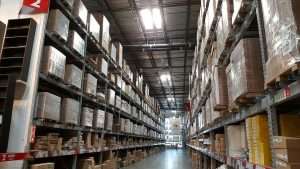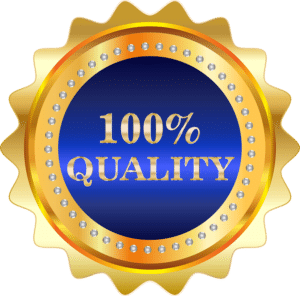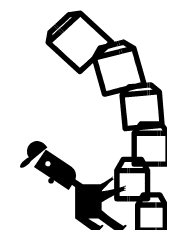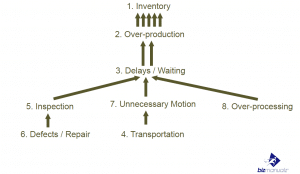What Is the Cost of Poor Quality?

If you are trying to explain the importance of quality to management, then you need to explain it to management using the language of management — costs and return on investment. Crosby described the cost of quality as the cost of nonconformance. Juran, another quality guru, explained it as the cost of poor quality or the costs incurred as a result of poor quality. What Is the Cost of Poor Quality (COPQ)?
What Is Cost of Quality?
When talking to management, you need to make a business case for quality based on the costs you think you can reduce versus the investment needed and phrase it in their language of Return On Investment (ROI). How do we do that, make a business case for quality? It is all based on understanding the Cost of quality and the Cost of poor quality.
The cost of quality COQ is typically explained as consisting of four elements: prevention, appraisal, internal failure and external failure costs (see below). But first, I have a simpler explanation. Your business has three things to worry about:
- What is productive work?
- What work do you need to perform to ensure work is productive?
- Is there unproductive work or lean waste?
Your cost of poor quality consists mainly of the unproductive work. The goal in quality is to focus on the productive work, ensure your work is productive, and get rid of the unproductive work. Sound simple?
It could be that simple except it can be difficult separating the productive work form the unproductive work because they can look the same. After all, if you have a lot of waste, then you need the unproductive work to manage the waste.
Cost of Poor Quality (COPQ)
Traditional Cost of Quality discussion focus on the four elements: prevention, appraisal, internal failure and external failure costs, which is also known as the cost of poor quality of COPQ for short.
1. COPQ Prevention
Prevention should be thought of as a good thing. More like an investment in good quality as opposed to a cost of poor quality. Since we do spend money on prevention, I guess it is a cost. Prevention costs include actions taken to prevent poor quality. You know the old saying; an ounce of prevention is worth a pound of cure. In quality that is exactly how it works.
If you are unable to design in quality from the beginning then you will have to inspect in quality at the end as well as deal with the internal and external failure costs. Prevention is where a quality manager should focus. Unfortunately most quality managers end up focusing on correction instead of prevention.
Prevention cost examples include:
- Quality control plans
- Lean error proofing
- Capability studies
- Supplier evaluations
- New product reviews
- Policies, procedures, and work instructions
- Quality improvement meetings, projects, events
- Failure Modes Effects Analysis (FMEA)
- Quality awareness, education, and training
2. COPQ Appraisal
Appraisal costs could be thought of as Inspection and testing costs. Appraisal costs focus on the work necessary to ensure prior work is productive and thus ensure conformance to standards and performance requirements.
Examples include the appraisal costs for:
- Source inspection
- First Article Inspection (FAI)
- In-process inspection or final testing
- Internal Auditing of product, process or services
- Voice of the Customer audits
- Measuring and test equipment calibration
3. COPQ Internal Failures
Internal failure costs occur before product is shipped or the service is completed, to the customer. I also like to look at process failures too and not stop at common material failures.
Internal failure examples include:
- Scrap and Rework
- Re-inspection and Re-testing
- Material review
- Safety accidents
- Process failures, data entry errors, missing information
- Missed process steps
- Expedited shipping
- Supplier returns processing
More COPQ to Think About
To capture the whole picture, you should think about the non-traditional costs. Some might think of these as part of internal failure costs.
Inventory Handling Cost
For example, let’s consider inventory handling. If you have a lot of inventory (in lean, inventory is considered waste), then you will have material handlers that are needed to move the inventory along. Your inventory handlers look like productive work. Ask them and they will tell you that they are being productive moving inventory around the plant.
Management thought it was productive work when they bought the forklifts, right? But if you can design a system of balanced work cells that align the work in a single piece flow (like an assembly line) then you don’t need forklifts to move the material from one work cell to another. It just flows…
Therefore, inventory, the forklifts, and your material handlers all contribute to your cost of poor quality. As we look around the company we can find many examples of unproductive work masquerading as productive work. It just takes a lean eye to tell the difference.
Cost of Quality in Sales & Marketing
Every processes contributes to the cost of poor quality. Sales and marketing are processes that do contribute to the cost of quality too.
For example, sales people can enter the order wrong, can contribute to lost sales with a faulty sales process, or spend too much time with the wrong customers.
Marketing can provide too many features for development to work on, poorly define the market, or fail to provide the correct marketing information to sales. Customer service people handle complaints, problems and customer issues. But, if you had fewer issues then you would need fewer customer service people.
Sales and Marketing Inputs
Sales and marketing are frequently looked at as excluded from quality. Many people think quality only relates to manufacturing (sometimes this is because quality reports to manufacturing). The bottom line is bad inputs = bad outputs, which can trickle down to manufacturing failures caused by sales and marketing failures. You are only a strong as your weakest link…
The next time you review your enterprise strategy for growing sales, make sure you take a look at your Cost of Quality metrics, which will tell you everything about how capable your business is to respond to your customers, competitors, and employee demands.
4. COPQ External Failures
External failure costs related to cost of poor quality occur anytime after the product is shipped or the service is complete. When looking at external failures that occur years in the future, it is important to attribute the failure to the proper production year (born on date) to find the cause of the failures.
External examples include:
- Processing customer complaints, claims, or returns
- The actual customer return
- Warranty claims
- Product recalls
- Lost sales
The Cost of Poor Quality?
Cost Of Quality (COQ) is also referred to as Cost of Poor Quality (COPQ) and is defined by most as including: prevention, appraisal, internal failures and external failures. Understanding your COQ or COPQ provides quality with the ability to explain quality to management using management’s language of cost. The result, you have now discovered how to make the business case for quality to your management.
Download Free Policies and Procedures to see how easy it is to edit MS Word Templates to build your own policy and procedure management system.

















Very informative